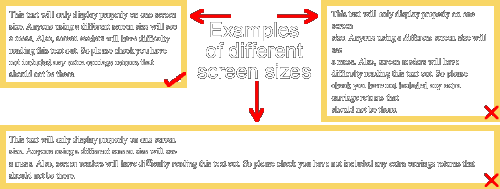Accessibility and Usability Guide
by TomAtack



- Contents
- Introduction
- Further Guidance
Text Guidelines
Always check headings, emphasis, extra spaces, punctuation, acronyms, abbreviations and foreign language terms
Headings
- Use proper heading tags to highlight headings.
- Headers must be hierarchical. For example, 'H2' subheadings must only appear within an 'H1' main heading; and 'H3' sub-subheadings must only appear within an 'H2' subheading.
Emphasis
- Never use underline to emphasise words online. Underlining generally indicates the underlined word or phrase is an active hypertext link.
- Never use capitals to emphasise words online. Block capitals are generally regarded as shouting, and are considered rude.
- Use bold type to emphasise a word or a few words.
- To emphasise a statement, use blockquote, or even blockquote and bold type.
Extra spaces
- Delete unneeded spaces and carriage returns.
- Check you have not inserted any carriage returns within a paragraph. (This is a common mistake, especially when copying and pasting text from a Word document.)

Tip: try resizing your application screen size:
- Does the text 'wrap around' correctly to fit into different screen sizes?
- Or does the text keep the same line endings and look wrong on some screen sizes (as illustrated in the example above)?
Punctuation
Use correct punctuation:
- Remember to use consistent punctuation throughout the entire organisation.
Acronyms and abbreviations
Specify the expansion of each abbreviation or acronym in a document where it first occurs.
- For example, World Wide Web Consortium (W3C).
Foreign language terms
You must clearly identify changes in the natural language of a document's text.
It is probably best to avoid using any non-English phrases. Including them is not straightforward. If you wish to use a foreign phrase, learn how to insert foreign language content.